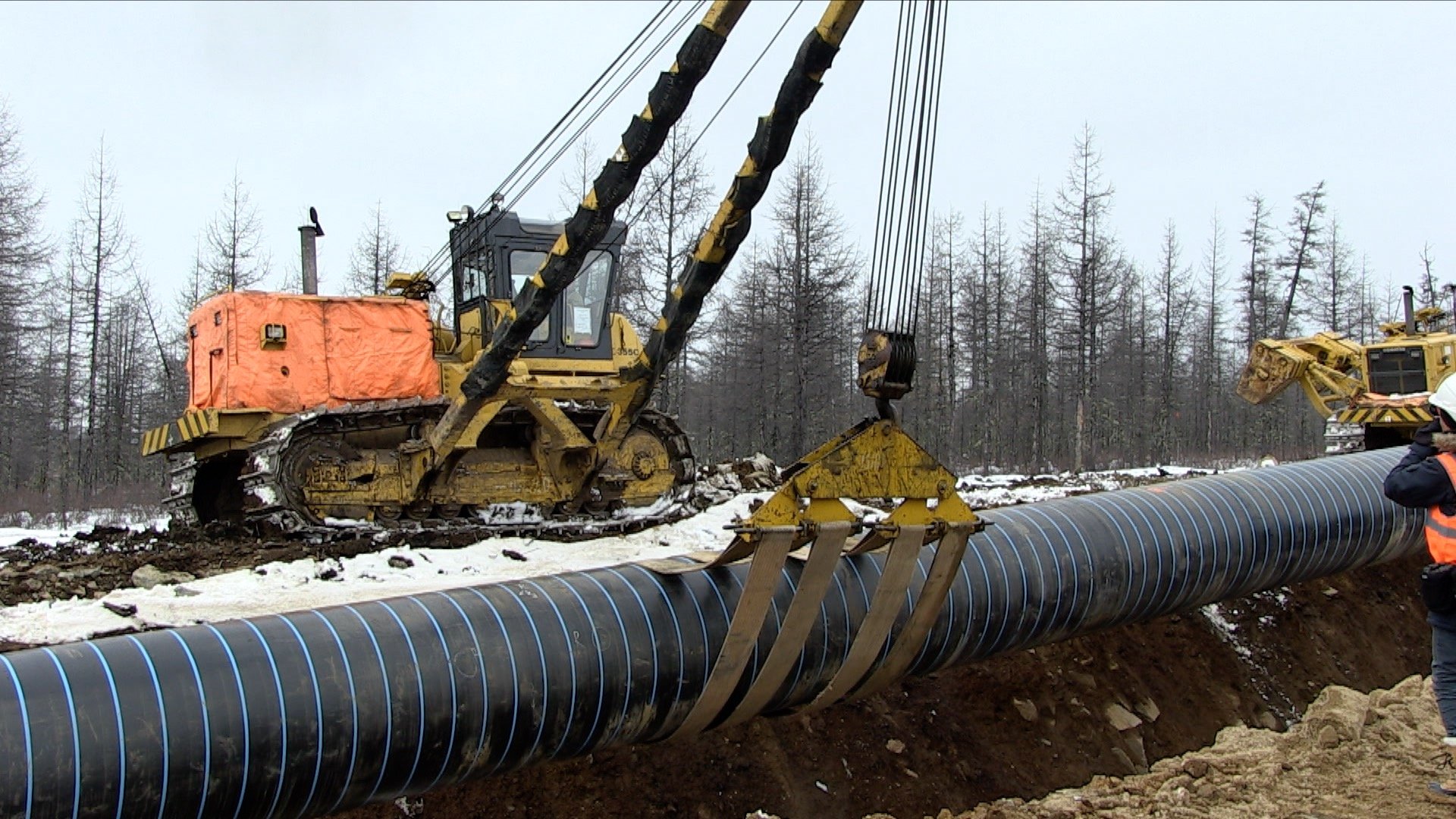
Europe
15:53, 10-Apr-2019
Russian Gas Exports: Power of Siberia, power of future
Aljosa Milenkovic
03:00

Construction of the Power of Siberia gas pipeline enters its final stage. The pipeline is the first of its kind that directly connects the vast natural gas fields of Russia with consumers in China. It is scheduled to annually deliver 38 billion cubic meters of natural gas over the next 30 years.
Almost 99% of the Russian part of the pipeline is finished and now final works are done close to the Russian town of Blagoveshchensk, where Power of Siberia crosses into China. We visited Blagoveshchensk in the middle of March. A strong, but not unexpected blizzard greeted us with temperatures plunging as low as -20 degrees Celsius. That's not uncommon here in the middle of March.
And yet this is just a small example of how builders of the Power of Siberia had to endure tough weather to complete this project. At this moment they were laying in the ground the last remaining pipes on the Russian side, every day inching closer to China.

Snow blizzard in middle of March in Blagoveshchensk. /CGTN Photo
Snow blizzard in middle of March in Blagoveshchensk. /CGTN Photo
Energy shift of China
To get here, Power of Siberia already crossed 3000 kilometers of some of the most inhospitably terrain on the planet. It's journey will continue on the other side of the border where ultimately it will deliver natural gas to energy-hungry China.
In the wake of massive energy shift that China has embarked upon, of switching from coal and oil to more eco-friendly natural gas, this pipeline is just what China needs. It will bring it to the areas of China that are not accessible to the liquefied natural gas, or LNG ships, and also it will bring it from just across the mutual border without any possibilities for any meddling of the third parties.
As Dimitriy Abzalov, Political Analyst from Moscow told us, this pipeline is highly beneficial for China.

Heavy machines laying pipes for Power of Siberia gas pipeline. /CGTN Photo
Heavy machines laying pipes for Power of Siberia gas pipeline. /CGTN Photo
"China is interested in having gas through the pipeline, which is directly connecting producer with the consumer. If tomorrow the U.S. 'colleagues' wants to pressure for instance Huawei again, or gas prices in Europe are more attractive to them, then their LNG ships will turn away from China. So, in order to have energy stability, China is interested in having reliable deliveries of the natural gas through the pipelines."
Power of Siberia: mutual beneficial
But Power of Siberia is not just in the interest of China. For Russia it means further diversification of natural gas deliveries, which are now mainly focused on Europe, opening of the new gas fields that were not exploited before, and maybe the most importantly, stopping the outflow of people from its Far East.
Depopulation is one of the main problems for the Russia's Far East and projects like this one will for sure keep here thousands of those intending to leave for the more prosperous regions.

Ekaterina Kireeva, Deputy Economy Development Minister. /CGTN Photo
Ekaterina Kireeva, Deputy Economy Development Minister. /CGTN Photo
Ekaterina Kireeva, Deputy Economy Development Minister of the Amur Region agrees that Power of Siberia will bring significant benefits to their region.
"It's a good job, it's a good employment opportunity and the second thing, we should consider this moment, is the good conditions for living. Everyday's living. Actually, if you have these two moments, you can be sure that more young people will make the right decision to stay here."
By the end of 2019, the first cubic meters of natural gas should start flowing through this pipeline.
As this project is seen as beneficial to both sides, already on the table are deals that should lead to the construction of new gas pipelines between Russia and China, mainly Power of Siberia 2, about which a number of officials from both sides are now openly talking.

SITEMAP
Copyright © 2018 CGTN. Beijing ICP prepared NO.16065310-3
Copyright © 2018 CGTN. Beijing ICP prepared NO.16065310-3